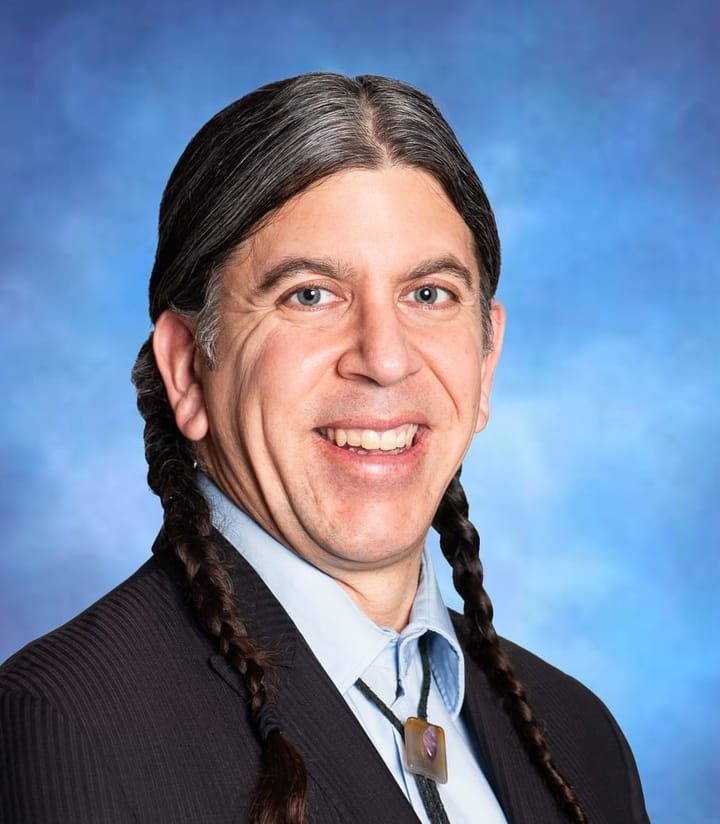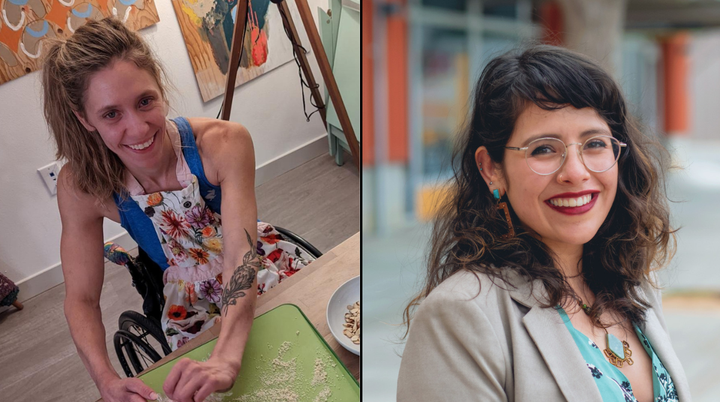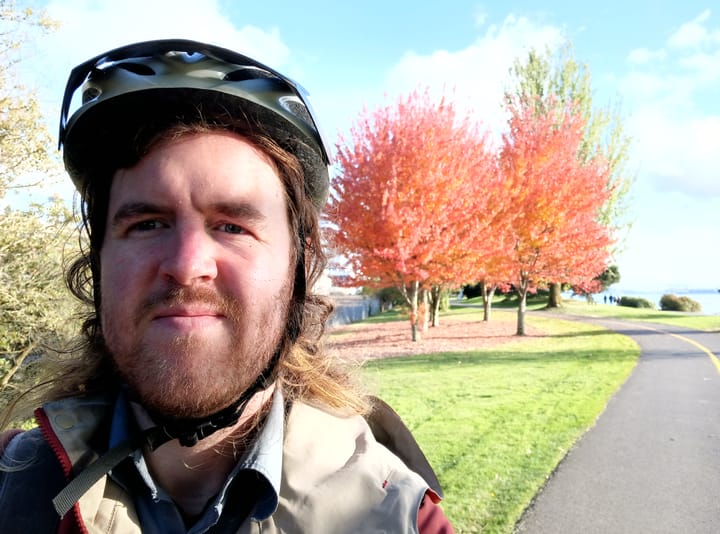Seattle’s $1.35B Transportation Levy Renewal Sparks Debate
Seattle Mayor proposes $1.35B transport levy renewal, focusing on repaving and bridges. Advocates push for more funding for transit, safety & sidewalks to address climate and traffic deaths. Levy goes to City Council in May, with public input opportunity.
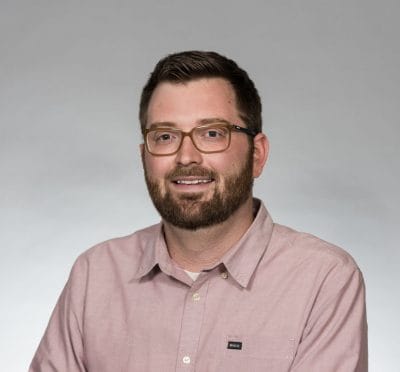
UPDATE: Since this episode was recorded, Mayor Harrell increased his proposal to $1.45 billion. Read more here.
Seattle, WA - Mayor Bruce Harrell has introduced a draft proposal for a $1.35 billion transportation levy to renew the expiring Move Seattle Levy. The proposed nine-year levy aims to address street repaving, bridge maintenance, and spot improvements for transit, but falls short of the transformative vision advocated for by transportation and climate activists.
In an interview with Hacks & Wonks, Doug Trumm, publisher of The Urbanist, provided insights into the proposed levy. "The mayor proposes a levy that's $1.35 billion, so it is roughly in line with inflation from the last levy, which was $930 million," Trumm explained. "Over $400 million would be spent on street repaving and over $200 million on bridge upkeep."
While these investments align with pledges made by candidates like Councilmember Rob Saka, who dubbed himself "the pothole king," Trumm noted that the proposal lacks a strong focus on transforming streets to address climate change and improve safety. "It's mostly let's keep what we got and repave it. With some hopeful exceptions - obviously, we have policies that are supposed to encourage the City to think bigger, but what this proposal does doesn't necessarily promise that," he said.
Advocates expressed disappointment with the current proposal, hoping for a more transformative levy that would address the climate crisis and traffic safety. Trumm emphasized the opportunity for change, stating, "It doesn't have to be that we're spending over $600 million on repaving and bridge upkeep, but only $121 million on transit and $107 million on safety improvements. We can increase the size of the buckets for transit and safety and sidewalks so they're more on par, and we can be putting our money where our mouth is when it comes to climate and reducing traffic fatalities in our city."
A coalition that includes Seattle Neighborhood Greenways, Disability Rights Washington, and Cascade Bicycle Club, and others have been pushing for at least 50% of the package to be dedicated to pedestrians, bicyclists, and transit.
An element of the proposal receiving broad praise is $57 million for making public spaces more inviting, though the specifics remain undefined. "It'll be interesting to see the mayor define that more. But the general idea is creating either car-lite or car-free environment so that people feel more comfortable actually sitting either on the sidewalks or actually in the street," Trumm commented.
The levy proposal will be presented to the Seattle City Council in May, followed by a public engagement process. Councilmember Rob Saka, Chair of the Transportation Committee, will play a key role in the council's decision-making process.
Residents who wish to provide input on the transportation levy can email the mayor and city council, with the council reachable at council@seattle.gov. Advocacy groups are also planning actions to encourage the City to increase investments in transit, safety, and sidewalks.
The final levy proposal will be determined by the City Council before being sent to voters, likely this summer.
About the Guest
Doug Trumm
Doug Trumm is Publisher of The Urbanist, where he has contributed as a writer and editor since 2015. He graduated from the Evans School of Public Policy and Governance at UW in 2019 with a concentration in urban policy. As a car-free renter living in Seattle, his policy focuses include improving transit and street safety and tackling the housing affordability crisis. His cat Ole is a national treasure.
Resources
“Harrell Proposes Modest $1.35 Billion Transportation Levy Renewal” by Ryan Packer from The Urbanist
Seattle Transportation Levy Proposal | Seattle Department of Transportation
“A Deep Dive on the 15 Corridor Upgrades in Seattle’s Draft Transportation Levy” by Ryan Packer from The Urbanist
“Seattle Gives Up on Bike Network Expansion Goals in Draft Transportation Levy” by Ryan Packer from The Urbanist
“Seattle Levy Proposal Keeps Modest Pace of Building New Sidewalks” by Ryan Packer from The Urbanist
“Seattle Levy Proposal Lowers the Bar on Public Transit Investments” by Ryan Packer from The Urbanist
“Seattle Voters On Board with Big Transportation Levy, New Polling Shows” by Doug Trumm from The Urbanist
Seattle Neighborhood Greenways
Disability Mobility Initiative | Disability Rights Washington
Podcast Transcript
[00:00:00] Crystal Fincher: Welcome to Hacks & Wonks. I'm Crystal Fincher, and I'm a political consultant and your host. On this show, we talk with policy wonks and political hacks to gather insight into local politics and policy in Washington state through the lens of those doing the work with behind-the-scenes perspectives on what's happening, why it's happening, and what you can do about it. Be sure to subscribe to the podcast to get the full versions of our Friday week-in-review show and our Tuesday topical show delivered to your podcast feed. If you like us, the most helpful thing you can do is leave a review wherever you listen to Hacks & Wonks. Full transcripts and resources referenced in the show are always available at officialhacksandwonks.com and in our episode notes.
Today, I am thrilled to be welcoming Doug Trumm back to the program to discuss Seattle's proposed draft Transportation Levy. Doug is publisher of The Urbanist, where he's contributed as a writer and editor since 2015. He graduated from the Evans School of Public Policy and Governance at the University of Washington in 2019 with a concentration in urban policy. As a car-free renter living in Seattle, his policy focuses include improving transit and street safety and tackling the housing affordability crisis. Welcome to the program, Doug.
[00:01:29] Doug Trumm: Hi, Crystal. Thanks for having me - excited to be on.
[00:01:31] Crystal Fincher: Excited to have you. So what is the overview of this levy that Mayor Harrell recently introduced?
[00:01:39] Doug Trumm: For starters, the Seattle Transportation Levy is a huge part of the budget of the Seattle Department of Transportation, SDOT - it's about 30% of their budget under the existing levy. The mayor proposes a levy that's $1.35 billion, so it is roughly in line with inflation from the last levy, which was $930 million - and inflation has been pretty high in the last nine years - it's a nine-year levy. The mayor's proposal - it's about 10% over inflation, so it's going to build a similar amount of things - and it is pretty focused on repaving and bridge upkeep. Over $400 million would be spent on street repaving and over $200 million on bridge upkeep - and that's pretty in line with what candidates have been talking about. For example, the new Transportation Chair, Rob Saka, called himself "the pothole king" as he took over the Transportation Committee. So they certainly are meeting those pledges that some of the folks in that camp, which is pretty aligned with Harrell for the most part - they want to patch potholes, they're not as much focused on transforming streets with a 21st century vision, or trying to do climate-type work through this - it's mostly let's keep what we got and repave it. With some hopeful exceptions - obviously, we have policies that are supposed to encourage the City to think bigger, but what this proposal does doesn't necessarily promise that.
[00:02:54] Crystal Fincher: I want to back up a little bit and basically talk about how we got here. This is a renewal of a levy that's currently in place. What is that levy? What happened with it? And how did that lead us to here?
[00:03:08] Doug Trumm: So the last levy was passed in 2015. It was called the levy to Move Seattle - we just call it the Move Seattle Levy for short, usually. And that levy had some differences - and maybe we'll see that as this gets farther along because they'll have a campaign to actually pass it - but that levy was very ambitious in its framing and its promises. The mayor at the time was Ed Murray, and Ed Murray had just beat Mayor McGinn, who was known for being a biker - a person who rides a acoustic bicycle - and being in favor of bike change, he got nicknamed Mayor McSchwinn. And as Tom Fucoloro, the Seattle Bike Blog founder, wrote in his book - at the time, Mayor Murray wanted to steal McGinn's thunder and be a bike-friendly mayor. He also was very pro-transit - he wanted to be the transportation guy in reaction to eking in there by a few points in that last election. So they promised the world - seven Rapid Ride lines and lots of bike lanes, they promised a lot of new sidewalks, and Vision Zero was used to frame what the Murray administration was doing. Vision Zero being the goal to end traffic fatalities by 2030, which is modeled after successful programs in places like Sweden and all over Europe that have really curbed their traffic deaths by doing design interventions and really redesigning their streets. So this levy was in that space and promised a lot of stuff. And as we've seen over the past - it's almost been nine years now, since we're nearing the end of this levy at the end of this year - they weren't able to deliver on everything. Partially because they were expecting more federal grants than they actually got - the Trump administration obviously had a big part to play in that, but also just being very ambitious about how much outside funding they could get in general. Especially with the transit project, we ended up with about three of those seven and only one of those - Rapid Ride H - is done. There are two more on the way, but they're delayed. So I think they overcorrected in the other direction, and now we're seeing - we don't know exactly what we're getting so far - it's very vague and broad strokes. And that might just be partially not wanting to have to backpedal like they did the last time.
[00:05:03] Crystal Fincher: So, was I correct in reading that out of the 30 programs funded by the last levy called Move Seattle, that SDOT considers 27 of them to be successes and that just 3 didn't really deliver what was put forth in the levy? Is that an accurate assessment?
[00:05:22] Doug Trumm: Yeah, our transportation reporter - Ryan Packer's dug into that, and that is what SDOT has said. But as Ryan has pointed out, that's a favorable way to frame that because some of those projects, they had to change definitions from what they were understood to be, counting - for their sidewalk mileage - counting minor upgrades as the same as doing a full sidewalk build. Or counting a project that might not deliver a full protected bike lane, but offering lesser upgrades as the same as a project doing a full protected bike lane. So just stretching definitions of things to make sure you hit that figure or - part of what got advocates excited is - if you're going to move the needle on traffic safety, you have to tackle the most dangerous streets. A lot of the traffic deaths are focused on some of these high-speed, high-traffic corridors like Aurora and like Rainier Avenue - and the levy can promise a safety upgrade on that street, but how significant was that safety upgrade? Was it a few flashing beacons and new crossings, and maybe redesigning an intersection here and there? Or was it a true makeover of the corridor that is going to see result in fewer traffic deaths? And unfortunately, some of these corridors are still pretty dangerous, as we see with the traffic fatality stats still being very bad on Aurora and Rainier.
[00:06:30] Crystal Fincher: Like you said, the feeling was that - given that there was limited success on some of those or they didn't deliver as much as originally hoped in many of those projects - that there is a greater likelihood of success in delivering what was promised if we focus on fewer projects in this levy.
[00:06:49] Doug Trumm: I think that's probably fair to say - we don't have a full picture of the motivation or the strategy here, but I do think they didn't want to tie themselves to as many specific projects. There is going to be a corridor list, but those projects aren't scoped necessarily, so we don't know how big a project we're talking about in this corridor. And the usual suspects are likely to be on there, including some holdovers from the last levy. So it's sort of a devil's-in-the-details type of thing of - are we going to actually tackle this corridor or do a lesser project on it?
[00:07:19] Crystal Fincher: Okay, so that tees us up for coming into thinking about the levy renewal. You said we don't have a lot of information about exactly how this was formulated, but what kinds of considerations were in play and who was involved with the design and development of this levy renewal?
[00:07:37] Doug Trumm: I think SDOT did a lot of the work internally, but ultimately this is very much a Harrell administration call - they're going to have to present the legislation to council, get council to sign off. They have been consulting with advocates, but obviously they didn't just take what advocates said because advocates were pushing them to be a lot bigger. And The Urbanist is in collaboration with these advocates, which include groups like Seattle Neighborhood Greenways and Disability Rights Washington, Cascade Bicycle Club, a whole bunch of groups. And they're pushing for at least 50% of the package to be dedicated towards pedestrians, bicyclists, and transit. And this existing proposal doesn't hit that - it's at least 50% just for the repaving and bridge upkeep I mentioned earlier, so it's going the other direction. But there's - usual groups that are involved - the Chamber has an interest in this, Transportation Choices Coalition is often tapped to work on the campaign - they're also trying to push for a larger package. So those are the people trying to work behind-the-scenes, but it's largely up to the mayor. So those groups can only steer the Titanic so much, but maybe they will move more as this goes from initial draft to the legislation that will actually go on the ballot. But I think the general drift towards fiscal discipline, fiscal conservativism might be affecting it - they did some research showing that they could go bigger. SDOT actually commissioned a poll - found that a $1.7 billion package would pass relatively comfortably - 56% approved, to 40-something opposed, so it's pretty well above the water. And obviously the lower measure is also above water, but by a larger margin. But there definitely was a opportunity to go bigger than $1.35. And so far that's kind of where they're set on. And that's obviously a reflection of what they think the real priorities are right now - and repaving and bridge upkeep seem to be top of the list.
[00:09:24] Crystal Fincher: So really, as they set it up, there were two options in consideration. One more moderate proposal that would focus on bridges and maintenance. And another larger proposal - that they pulled - that would add additional things like transit elements, pedestrian-bike safety, things that aren't basically maintenance related - whether it's roads or bridges. And out of that deduction, they landed somewhere in the middle - closer to the roads and maintenance option - looking at maintaining what we have, but not really expanding more on that. And we had advocates saying - Hey, we're far behind our climate targets right now. We, in Seattle, share a vision of a community that is safe, vibrant, where people can get around easily - regardless what form of transportation they use - and be safe while doing so, while reducing our greenhouse gas emissions. And basically saying - We're trying to set ourselves up for a safer, more resilient future. Proposal was released, wound up saying - Okay, we're going to focus mostly on road maintenance, bridge safety. So as we get into this, what are the specifics of what is included in this levy that has been proposed?
[00:10:45] Doug Trumm: It's largely in buckets right now - we're not getting a project list necessarily. The two buckets I mentioned, with the repaving and upkeep, take the lion's share. And keep in mind - bridge projects are super expensive - so we're not talking about rebuilding bridges, we're not talking about planning massive projects here. We're talking about replacing some of the mechanisms with the lift bridges - stuff that we should do, but not revolutionary stuff here. Hopes for replacing the Ballard Bridge and the Magnolia Bridge are going to have to wait for a much larger pool of money because those are billion-dollar projects potentially in their own right. And then as far as the projects that are on the biking, pedestrian, and transit side - they're pledging a similar amount of mileage as the last levy - I think it was around 250 blocks of new sidewalks. And the gap of sidewalks is such in the city that that's not going to go very far. Seattle, as it grew, the outer neighborhoods just didn't have sidewalks - they were built more in the auto era, so they didn't bother with sidewalks in any of those neighborhoods. And there's a pretty significant racial equity gap in that because those are some of the more diverse parts of Seattle. So the sidewalk gap is most pronounced in the far north, and especially the southeast and far south of the city. And the last levy aimed for 250 blocks and that ended up moving about 2% or 3% of the sidewalk gap - the map varies on it - but it's hundreds of years that it would take at that rate to actually make sure that every block of the city had sidewalks, basic pedestrian infrastructure that people need because obviously you can't spend your whole life in a car. So it's largely go-along, get-along kind of plan that's largely keeping the pace of the last levy, which disappointed on a number of fronts, including - I mentioned the sidewalk gap, not making a progress on Vision Zero - we're still seeing too many people dying on our streets from traffic crashes. And even on the maintenance front, this levy just picked up the pace a little bit. But the maintenance backlog in our city still grew, even with the last levy spending hundreds of millions on that. And partially that's structural - we're just not investing enough in this, but that's kind of the cards you're dealt - being our tax system is largely designed by Tim Eyman. It'd be easier if some of these revenue sources were stabler than having to go back to voters for every little thing. Advocates are hoping that the levy could be additive rather than having to cover just basic stuff like making sure the roads don't deteriorate, which seems like a basic feature of government - we shouldn't have to worry about that in a city as wealthy as ours.
[00:13:01] Crystal Fincher: Yeah, but it seems like - unfortunately, we are put in this position where we do have to, and this, as you said, is a significant portion of SDOT's budget. When we talk about transit investments, what will the impact be for transit with this proposed levy?
[00:13:18] Doug Trumm: Unlike the last levy, which promised those seven major corridor upgrades - didn't deliver on it - but it promised seven busy bus routes were going to get significant improvements, get a Rapid Ride treatment, which certainly means faster service. This levy doesn't make any of those same promises, but there is a bucket of money that will go towards spot improvements, which can have a big impact. But part of my worry here is everyone wants spot improvements - no one wants a bottleneck on their bus. But if you're dripping those out in little bits at a time, there's no salesmanship to that or showmanship to it. You want the levy to also make the case for itself - like this bus is going to be 20% faster, that's a nice selling point. But if you're only promising spot improvements at an unknown pace - we don't know when maybe our bus is going to be 10% or 20% more reliable or faster. So unlike a Rapid Ride project, which you can see a before and after, I'm not sure if there's a before and after on a project like that. They could try to do a bunch of the spot improvements at once, but it's designed to be smaller scale and not a whole makeover of a corridor in a better vision - for efficiency for bus riders, but also it's a climate win too, when people can see the bus as a real option. So there isn't that splashy project advocates are asking for. And conceivably some of these projects could be strung together to provide that, but there's no exact promise that that will be the case.
[00:14:36] Crystal Fincher: And when you say spot improvements, what are examples of spot improvements?
[00:14:40] Doug Trumm: So spot improvements, sometimes that just means what they call a queue jump in transportation jargon, but it usually means a small bus lane at an intersection. Sometimes that's paired with a transit signal that gives the bus an early light - that can help the bus get ahead of a traffic jam, or I'm thinking of the Route 5 near my house - oftentimes coming off of Aurora, the road gets jammed at that intersection. So if that bus gets a light ahead of time we can get ahead of it. So it's little things like that, which can add up to minutes and save minutes and it's a nice addition, but it's obviously going to depend on how many of those they're able to string together and if some things get left off the table 'cause they don't quite fit into that mold. But it's little things like that - a small bus lane here or there, or sometimes it's changing the bus stop so that the bus stop bumps out so that cars don't try to cheat past the bus when it's stopped, which can sometimes lead to dangerous situations, or it's just a big line of cars at the next stoplight that are slowing down the bus. So it could be any number of things, but - actually, Metro keeps a list of these projects, recommended change for these buses, but it's always up to the local jurisdiction to actually then approve them and sometimes Metro chips in funding. So there is a list of them in some Metro report somewhere - and we've poked around at that from time to time and done some reporting on that - and it's not a bad thought to keep a bucket of money around to do that, but obviously I think some routes might need more treatment.
[00:15:57] Crystal Fincher: Now there's also $57 million proposed for making public spaces more inviting. What does that mean? And it looks like that may not be explicitly defined - there's a lot of flexibility there - so what are examples of what that could be?
[00:16:13] Doug Trumm: We're a little bit on uncharted territory because SDOT just hasn't done a lot of those projects, but it seems like they have in mind - particularly around business districts - where they can do patios, seating for the businesses. They can do just generally more seating in those kind of areas, support farmers markets, et cetera. There definitely seem to be a business district focus, but they also can do projects on quieter streets like along neighborhood greenways. So it's possible any of those things could sort of fit into that bucket, and it'll be interesting to see the mayor define that more. But the general idea is creating either car-lite or car-free environment so that people feel more comfortable actually sitting either on the sidewalks or actually in the street. And creating either places for commerce, or just places for people to recreate, or create more of a park-like atmosphere - and it's definitely a good idea, something that urbanists have been pushing for for a long time. And there's some obvious ones that would be great to see, but signals from City Council on the most obvious one - which would be to pedestrianize Pike Place through Pike Place Market - Councilmember Bob Kettle sent a warning shot that he didn't want to do that, he didn't want that funded in this levy. So that one doesn't seem to be necessarily on the table, and there's a lot of process that we need to go through because Pike Place Market has its own three-layer governing structure - and it's a whole maze to get through and they're not necessarily excited about it yet. So TBD on that one, but there's other opportunities around a lot of business districts that could use that kind of treatment and we'll see what comes of it. But it's a start anyway.
[00:17:42] Crystal Fincher: Absolutely. And it does sound like that could be a wide variety of things - we don't know yet - it would be great to hear Mayor Harrell present more of a vision or direction for that. But it could also take form of, it looks like, maybe even safety improvements - things as simple as lighting. But certainly the more safe and accessible and activated public spaces are - not only are they safer, but it does attract people, which is generally beneficial for the surrounding neighborhood and businesses in the area. So that seems like something that could really be exciting and even to your earlier point, deliver maybe on the flash factor where people can point at something and be - Oh, wow, that's really cool - and a reason why this was money well spent and we should look for more opportunities to do things like this. So we've talked about most of what's in the levy, most of what's been proposed. What is the political outlook around this, and what was the response to it from different elements and organizations in the community?
[00:18:46] Doug Trumm: I think advocates were a bit disappointed by the proposal. They were hoping for a transformative levy that met the moment for climate crisis, for the traffic safety crisis - and really got serious about what do we actually want our streets to look like rather than just taking everything as given. So $1.35 [billion] just can't fit that many transformative investments, especially if you take the attitude that at least half of it's going to be for just maintenance and upkeep. So I think there was some pushback and some desire to see more. I think those groups are looking to rally supporters and make a statement that they'd like to see more - pressure the mayor to change the final proposal for more, and also city council to ask for more. Because it'll ultimately be city council that gets a last chance to amend this as they send it to voters - probably this summer - there's more process to go through the next couple months. But I'm not exactly sure how the dust is all going to settle, but I think there are maybe some projects that councilmembers will want to see added - I don't know how extensive they will be, but I think everyone wants to see improvements in their neck of the woods. So it's just a matter of getting a large enough levy that that can be true of a lot of places.
[00:19:55] Crystal Fincher: Absolutely. And Councilmember Rob Saka is the Chair of the Transportation Committee for the Seattle City Council. This levy will be presented to the council sometime in May, there will be a public process incorporated. For people who are listening, who are thinking - Hey, my priorities might not be reflected in this, or I have opinions on what is in this. How can they get engaged and involved in this process and speak to the people who are making this decision?
[00:20:27] Doug Trumm: Definitely email the mayor and city council - you can find that information online - the City Council can be emailed at council@seattle.gov. But the group of advocates that have been pushing the City to go bigger is definitely doing some other actions as well - Seattle Neighborhood Greenways, Disability Rights Washington, Cascade Bicycle Club, and a number of other groups, The Urbanist is part of that coalition as well. This definitely is a big opportunity because they haven't set the levy in stone yet. It doesn't have to be that we're spending over $600 million on repaving and bridge upkeep, but only $121 million on transit and $107 million on safety improvements. We can increase the size of the buckets for transit and safety and sidewalks so they're more on par, and we can be putting our money where our mouth is when it comes to climate and reducing traffic fatalities in our city.
[00:21:19] Crystal Fincher: Absolutely. Well, thank you for that. We will also share that information in our show notes, and we'll continue to follow this as it goes through the process of public engagement and its process in the Seattle City Council. Thanks so much, Doug.
[00:21:34] Doug Trumm: Thank you, Crystal. It was a pleasure.
[00:21:36] Crystal Fincher: Thank you for listening to Hacks & Wonks, which is produced by Shannon Cheng. You can follow Hacks & Wonks on Twitter @HacksWonks. You can catch Hacks & Wonks on every podcast service and app - just type "Hacks and Wonks" into the search bar. Be sure to subscribe to get the full versions of our Friday week-in-review shows and our Tuesday topical show delivered to your podcast feed. If you like us, leave a review wherever you listen. You can also get a full transcript of this episode and links to the resources referenced in the show at officialhacksandwonks.com and in the podcast episode notes.
Thanks for tuning in - talk to you next time.

